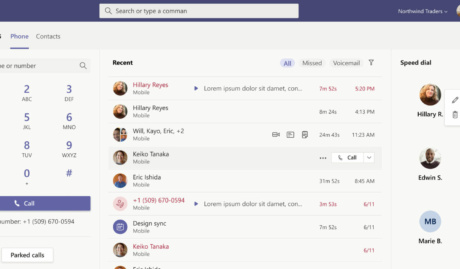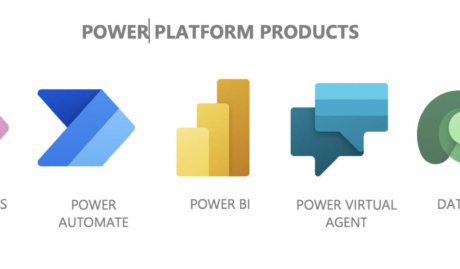Why Information Management Is the Strategy Behind Every Smart Business Move
When business leaders evaluate their operational costs, they naturally focus on the obvious expenses: payroll, rent, equipment, software licenses. These line items are clearly defined, easily tracked, and regularly scrutinised.
But there’s another cost category that rarely appears on any budget report yet quietly drains resources from every growing business: scattered information systems. This hidden expense compounds daily, impacting everything from decision-making speed to competitive positioning, often without leadership fully recognising its scope.
While you’re focused on driving growth, increasing efficiency, and protecting your business, your team is quietly losing productivity to information chaos—and it’s costing more than you realise.
The True Cost of Information Scattered Across Systems
The real expense isn’t in the technology—it’s in the compound effect of small inefficiencies.
For example:
- When your office manager spends an hour searching through email attachments for the latest employee handbook because three different versions exist.
- When your growing business loses a client opportunity because the proposal approval got stuck in someone’s inbox while they were traveling.
- When your nonprofit’s grant application gets delayed because the required compliance documentation is scattered across multiple team members’ computers.
These aren’t dramatic failures—they’re quiet productivity drains that accumulate into significant competitive disadvantages. While your team manages information chaos, your competitors with streamlined systems are focusing that same energy on winning new clients, securing funding, and scaling operations.
The Strategic Framework for Information Management
Smart business leaders approach information management the same way they approach any other critical business function: strategically. A well-designed information architecture directly influences:
Effective Collaboration Techniques:
- Decision-making speed: How quickly can leadership access the insights they need?
- Operational efficiency: How seamlessly do your teams collaborate on projects?
- Compliance readiness: How confidently can you demonstrate audit trails and document control?
- Scalability: How well will your systems support growth without breaking?
Beyond Band-Aid Solutions: Addressing the Root Cause
Many growing businesses attempt to solve information chaos by adding more tools—another cloud storage service here, a project management app there. However, this approach often amplifies the problem by creating more disconnected systems.
The fundamental issue isn’t storage capacity or individual tool functionality. It’s the lack of a unified information ecosystem that grows with your business while maintaining security and simplicity.
Smart organisations recognise that effective information management requires three core capabilities:
- Findability: Any team member can locate any document within seconds, regardless of who created it or when
- Collaboration: Teams can work together on documents in real-time while maintaining clear version control and approval processes
- Security: Information access is controlled, auditable, and compliant with your industry requirements
The Microsoft 365 Integration Advantage: Why Unified Systems Drive Growth
Forward-thinking organisations recognise that their technology stack should amplify human capability, not complicate it. This is where strategic integration becomes crucial—and why Microsoft 365 with SharePoint provides a strong foundation for scalable businesses.
When your information management seamlessly connects with the communication and productivity tools your team already uses, several transformative things happen:
- Adoption becomes natural: Teams don’t need to learn entirely new systems or change established workflows
- Efficiency multiplies: The same action (saving a document, updating a project status) triggers updates across multiple business processes
- Visibility increases: Leadership gains real-time insights into project progress, resource allocation, and team productivity
- Compliance simplifies: Rather than managing permissions and audit trails across multiple systems, everything operates under consistent, enterprise-grade security protocols
Turning Information Management into Competitive Advantage
The most successful SharePoint implementations we’ve seen don’t just solve existing problems—they unlock new capabilities that weren’t previously possible:
- Automated workflows: Eliminate manual approval bottlenecks, allowing your team to focus on strategic work rather than process management
- Real-time insights: Provide leadership with immediate visibility into project status, resource allocation, and operational efficiency
- Scalable processes: Ensure that information systems enhance rather than constrain growth, supporting new team members, locations, and business complexity without requiring complete overhauls
- Compliance simplifies: Rather than managing permissions and audit trails across multiple systems, everything operates under consistent, enterprise-grade security protocols
The competitive advantage becomes clear when your organisation can respond to client requests immediately because all relevant information is instantly accessible. Strategic decisions improve when they’re based on complete, current data rather than incomplete snapshots. New team members become productive from day one because information is organised and findable. Most valuable for growing businesses: compliance readiness becomes instant rather than a scrambling exercise when auditors arrive.
The Implementation Mindset: Strategic, Not Tactical
Successful information management transformation requires approaching the challenge strategically rather than tactically. This means starting with clear business outcomes—defining what success looks like in terms of reduced decision-making time, improved project delivery, or enhanced compliance readiness. Smart organisations design for growth from the beginning, ensuring their solution can adapt as teams double in size, expand to multiple locations, or develop more complex approval workflows.
Equally important is planning for adoption by leveraging existing tools and workflows rather than forcing dramatic changes that create resistance. Finally, security must be prioritised from day one, implementing enterprise-grade protections that maintain compliance requirements while actually improving accessibility for authorised users.
Your Next Strategic Decision
Every day your organisation operates with scattered information systems, you’re making an unconscious choice to accept inefficiency, security risks, and missed opportunities.
The question isn’t whether to address this challenge—it’s whether to approach it strategically or continue managing it reactively.
Smart business leaders recognise that information management isn’t an IT project—it’s a business transformation that directly impacts growth, efficiency, and competitive positioning.
The organisations that thrive in the coming years will be those that turn information chaos into strategic advantage. The technology exists. The question is whether you’ll use it strategically.
Ready to transform information chaos into competitive advantage with SharePoint?
At Grassroots IT, we help growing businesses implement strategic Microsoft SharePoint solutions that scale with their ambitions. Our approach focuses on understanding your unique challenges and designing unified information management systems that enhance rather than complicate your operations.
Contact us today to discuss how strategic information management can accelerate your business objectives.




































